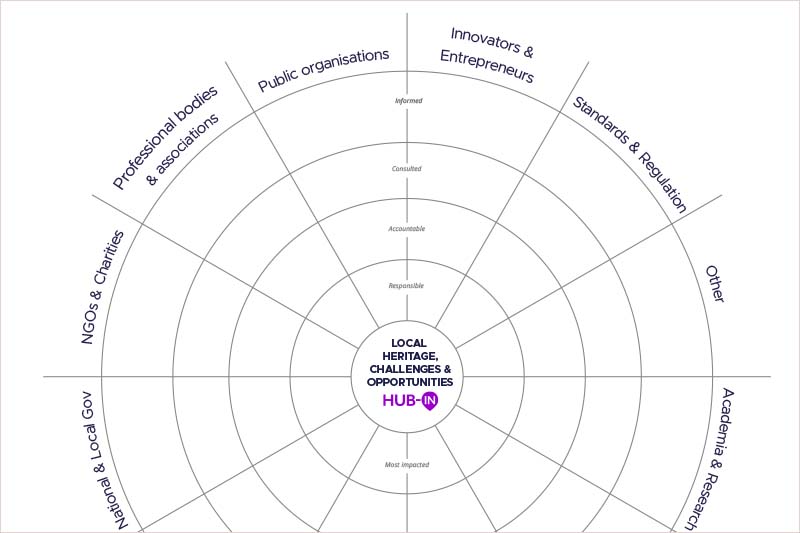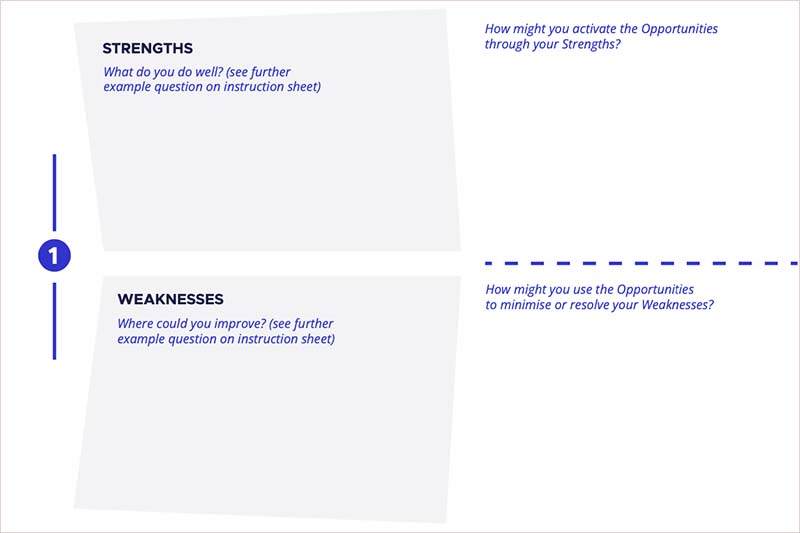Toolkit
The HUB-IN toolkit provides historic urban areas and HUB-IN city teams, with varied experiences on co-creation and innovation approaches, with a range of practical tools and guides to become a HUB-IN place.
NOTE: This version of the toolkit has been developed over the project period – Sept 2020 till Feb 2025. To share feedback about these activities and resources, please fill in the feedback form or contact the Connected Places Catapult team.
Stage 1 – Understand the state of play
ATLAS – CURRENT LANDSCAPES – FRAMEWORK – ECOSYSTEM - In this discovery stage cities aim to understand the context, history, and narrative of their historic urban area and ecosystem in order to identify effectively the unique local challenges that their HUB-IN place will address. This time provides an opportunity to review engagement with collaborators and local stakeholders, utilising co-creation and open innovation methodologies.

Understand HUB-IN mission, principles, and key concepts

Understand who needs to be involved

Get a good sense of your area and its uniqueness

Uncover what is hopeful and what is concerning

Uncover what your opportunities and gaps are

Discover what is happening elsewhere

Examine urban conditions through ethics
Stage 2 – Prepare to set-up the HUB
ROADMAPS – VISION – ECOSYSTEM – MODEL GUIDES – In this stage strategy building and ecosystem engagement accelerates, with roadmaps, ecosystem maps and model guides. City teams will co-define a vision for their HUB of Innovation & Entrepreneurship, while starting to consider options for its physical and digital form and location.

Co-create a strategic, actionable way forward

Prioritise who needs to be involved and when

Define how you engage with key people and partners

Georeference your local ecosystem and resources

Explore business, finance and governance models

Explore and strengthen your heritage-led entrepreneurial ecosystem
Stage 3 – Set-up and launch the HUB
ACTION PLANS – LOGIC MODEL – IMPACTS - MATCH & IGNITE – MONITORING – City teams will launch, activate, implement and pilot their HUB of Innovation and Entrepreneurship, introducing the community to their HUB and its offer through their place’s brand, further communication efforts and innovation activities, events and more.

Develop and test ideas

Get clarity on what will be measured and why

Consider the approach for impact assessment

Define actions, resources and responsibilities

Attract and onboard innovators and investors in relation to your HUB’s opportunities

Communicate your HUB and increase its visibility

Review and iterate on your local ecosystem map

Tailored monitoring – Capture ongoing data as appropriate
Stage 4 – Test and grow
PROTOTYPING – ECOSYSTEM – MONITORING – ALLIANCE – A loop of testing ideas, cross-fertilisation, measuring the success, iterating based on learnings and growing and regenerating. Continuing to collaborate and share learnings across the network, this stage will see the hubs go from strength to strength.

Develop and test ideas

Understand what is going well and what is not going well

Review and iterate on your local ecosystem map

Connect and grow, strengthen the movement

Develop business, finance and governance models
Throughout the journey – Collaborate, share and grow the network
ENGAGE – ATLAS – FRAMEWORK – ECOSYSTEM –ETHICS – ACADEMY – ALLIANCE – The promotion of collaboration and sharing is at the heart of HUB-IN, to upscale and evolve beyond the pilot stage with follower cities across Europe and beyond.

Get a good sense of your area and its uniqueness

Learn and discover the state of play through European (and global) case studies

Bring everyone onto the same page and create visibility for your HUB-IN place to be

Define how you engage with people and partner (throughout)

Explore and strengthen your heritage-led entrepreneurial ecosystem

Examine urban conditions through ethics


